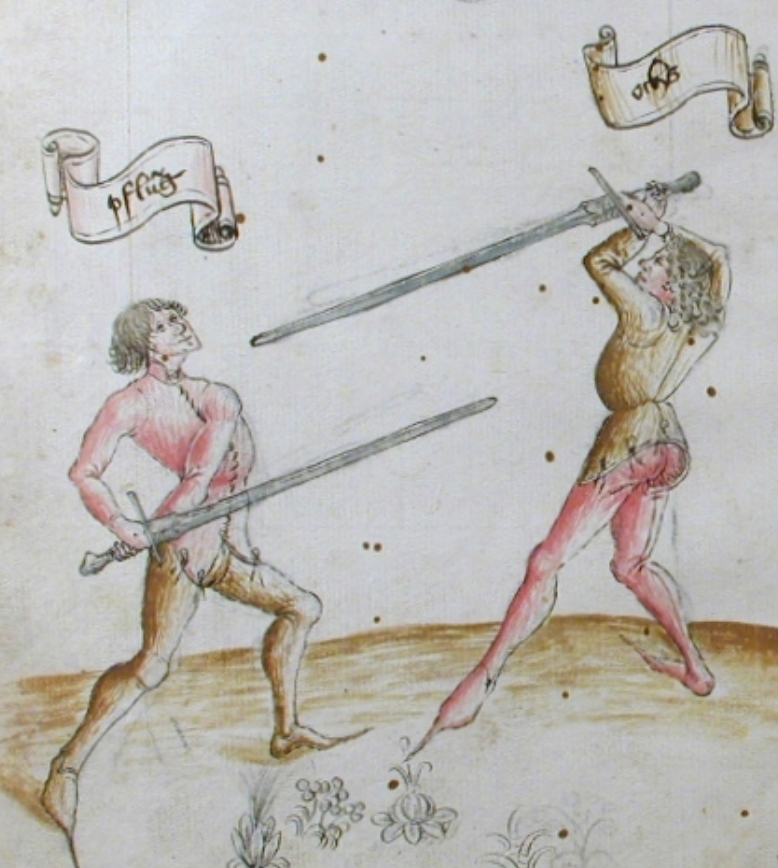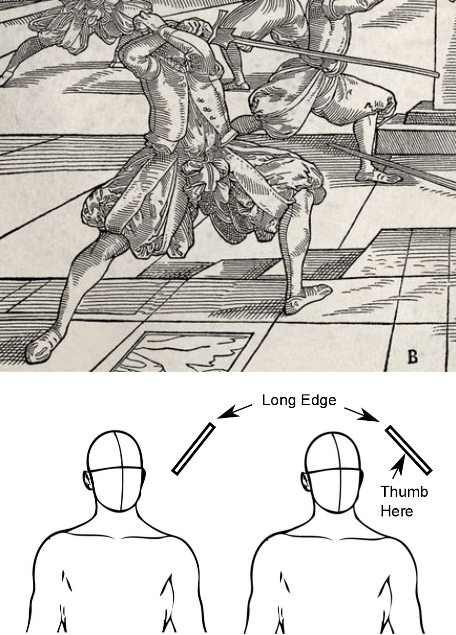Ochs
(→15th Century) |
(→15th Century) |
||
| Line 9: | Line 9: | ||
The fencer on the right depicts an Ochs position | The fencer on the right depicts an Ochs position | ||
| − | [[File:Ochs and pflug.png | + | [[File:Ochs and pflug.png |300px]] [[File: Ochs and pflug 2.png | 300 px]] |
=16th Century= | =16th Century= | ||
Revision as of 07:56, 25 September 2018
Contents |
Ox
A high hanging guard with the point online. The left ox is performed with the right leg forward and the hands high and uncrossed by the left side of the head. The right ox is performed with the left leg forward and hands crossed, holding the blade to the high right of the head.
15th Century
Pseudo von Danzig tells us to: "stand with your left foot before and hold your sword near your right side, with the hilt before your head so that your thumb is under the sword, and hang the point in against his face."
The fencer on the right depicts an Ochs position
16th Century
Longsword
Posture for ochs is seen with both cross and forward weighted posture.
The blade may be angled with the long edge pointing up and away from the head at around 45 degrees, or the blade can be thumbed from below so that the crossguard is angled upward and toward the head. The choice of angle depends on application; adopting an ochs from a zwerch is better achieved with the angled down guard, while cuts from below are better used with a crossguard angled up position.
This is an on-point final position for a cut from below (unterhauw), or the cut can more through to einhorn.
The ochs is one of the four principal guards.
Rappier
A similar guard position to the longsword, the ochs with the rappier threatens with the point. The guard can be held to the right or the left side; on the left the right leg is still forward with the hand inverted, palm facing toward you.
For the right ochs, Meyer describes four recommended parries:
For the left ochs, Meyer describes three recommended parries:
- Slicing Off
- Suppressing
- Taking Out from below with the half edge.



